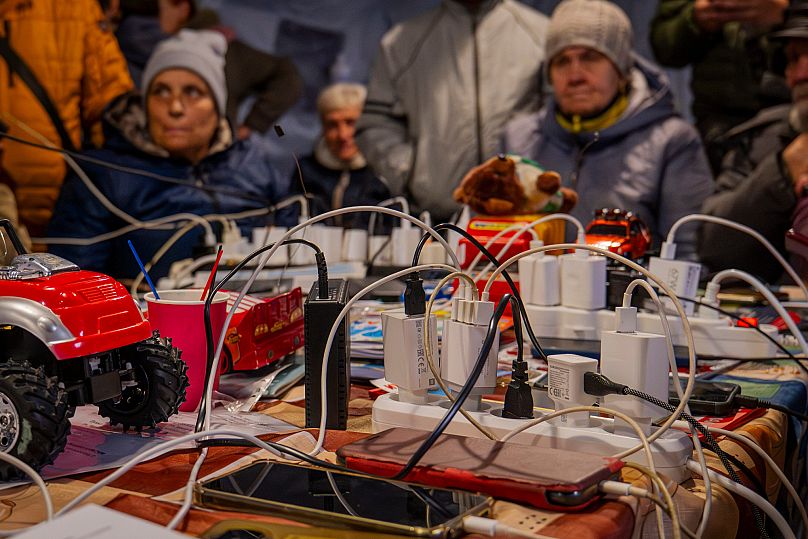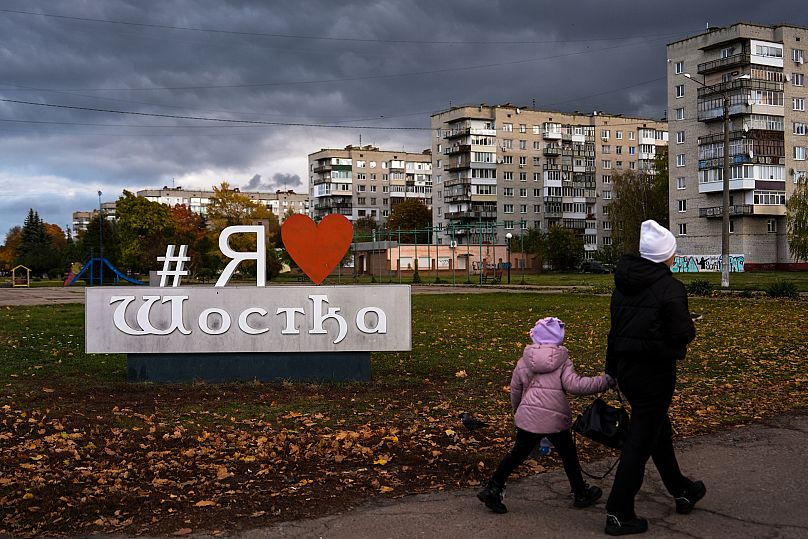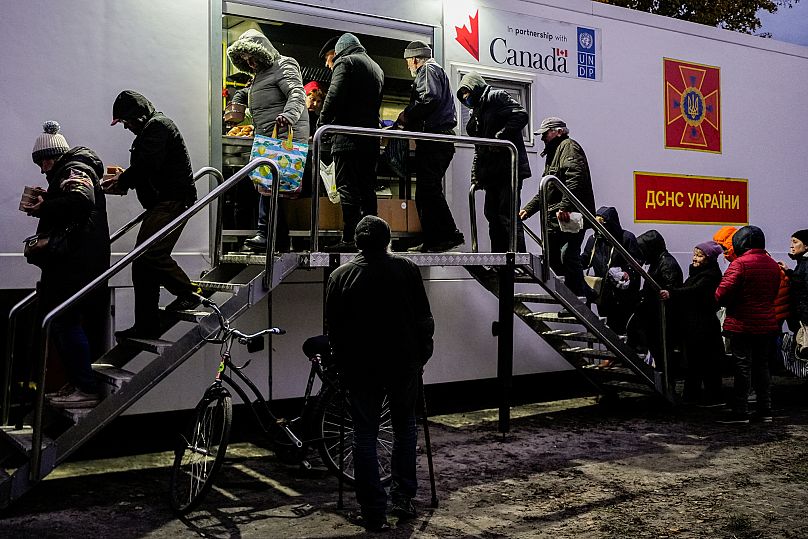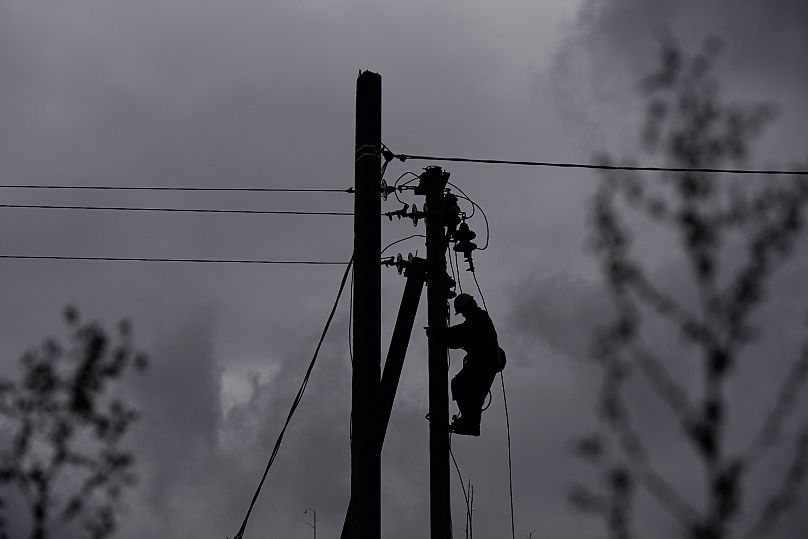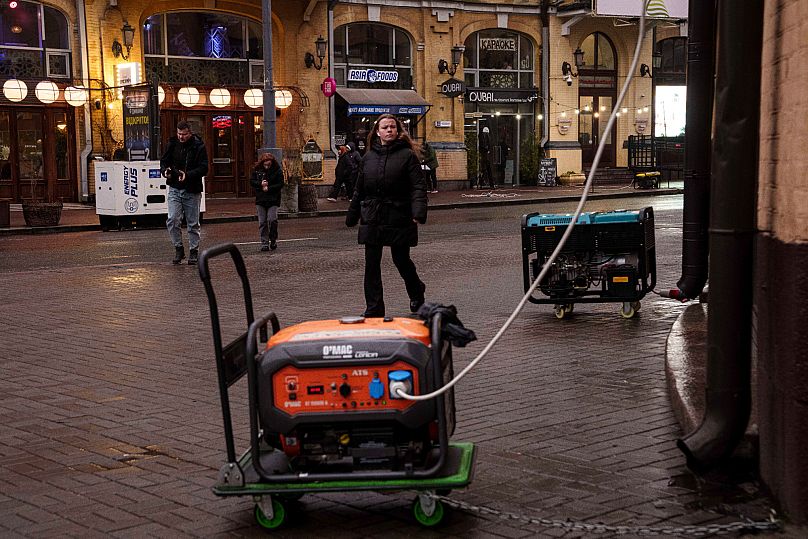Russia's new energy assault strategy pushes Ukraine into another winter of blackouts
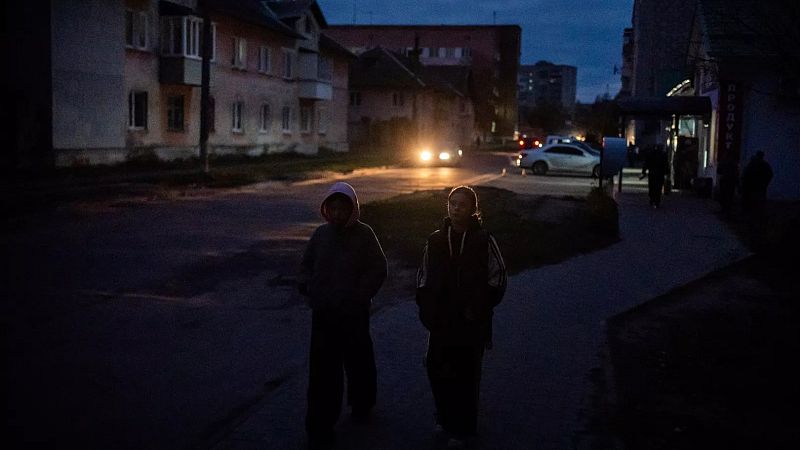
Millions of Ukrainians across the country are bracing for another winter of power cuts and possibly blackouts as Russia renews its annual campaign of attacks on the country's energy grid.
But this year looks slightly different as analysts and officials say that Moscow has shifted tactics and is now targeting specific regions as well as gas infrastructure.
In some regions, mostly those closer to the front line in the east, the season of buzzing generators has started, as well as long hours of darkness with no power or water.
People are once again pulling out small power stations, charging numerous power banks, and storing bottles of water in their bathrooms.
The attacks have grown more effective as Russia launches hundreds of drones, some equipped with cameras that improve targeting, overwhelming Ukraine's air defences, especially in regions where protection is weaker.
The consequences are already reshaping daily life, especially for those whose survival depends on electricity.
For Zinaida Kot, who has been on dialysis for seven years, this is far worse than mere discomfort. Without electricity, the machine that keeps her alive stops working.
"It is bad. We really worry when there is no electricity," she said from her hospital bed, connected to a dialysis machine powered by a generator that staff call "not reliable enough."
"If there's no treatment, I would die. I would not exist."
Blackout in Shostka
In early October, a Russian strike left the small northern town of Shostka without electricity, water, or gas.
The town lies just 50 kilometres from the front line in the northern Sumy region. Gas service was later restored and electricity returned for only a few hours each day.
"The situation is challenging," said Mykola Noha, the mayor of Shostka. Electricity and water are now supplied on a schedule, available for a few hours each day.
"And it really worries the residents as we can't predict power cuts. We fix something and it gets destroyed again. This is our situation."
Shostka hums with the low growl of generators. They power cafes, shops, residential buildings and hospitals. Across town, so-called "invincibility points" offer residents a place to charge devices and warm up.
The hardest days, locals say, were when there was no gas — no heat or way to cook — and people made meals over open fires in the streets.
At the local hospital, where all stoves are electric, staff built a simple wood-burning oven during the early days of Russia’s 2022 full-scale invasion, when the town came close to occupation.
And now it helps to feed at least 180 patients, said Svitlana Zakotei, a nurse who oversees the patients’ meals.
The hospital has spent three weeks running on generators, a costly lifeline that burns almost half a tonne of fuel a day, about 250,000 hryvnias (€5,145) a week, said the hospital's chief, Oleh Shtohryn. That's nearly as much as its usual monthly electricity bill.
Power is rationed. In the dialysis ward, lights stay dim so electricity can feed the machines that keep patients alive.
One of the eight units burned out because of the blackout, a costly loss the hospital could not afford to replace soon. Still, 23 patients come daily for hours-long treatment.
Russia's new strategy
The crisis in Shostka reflects Russia’s shifting strategy. In 2022–2023, Moscow launched waves of missiles and drones across the country to destabilise Ukraine's national grid. This year however, it is striking region by region.
The recent pattern shows heavier attacks on the Chernihiv, Sumy, and Poltava regions, while Kharkiv, Odesa, Mykolaiv and Dnipro face less frequent but still regular strikes.
On Tuesday, Chernihiv and part of the region were left without electricity after Russia attacked the local energy grid the night before, local officials said.
"They've had no success hitting the national infrastructure because it’s now much better protected and operators know how to respond," said Oleksandr Kharchenko, director of the Energy Research Centre.
"So they've decided to refocus and change tactics."
Front-line regions within about 120 kilometres of combat are the most vulnerable, he said.
"These are attacks on civilians who have nothing to do with the war."
And for Ukrainian energy crews, that means fixing the same lines and stations again and again, from transmission towers to thermal plants, while enduring outages at home.
"But it's our job. Who else would do it? Nobody else would," said Bohdan Bilous, an electrical technician. "I want to be optimistic and prepared for any situation, but the reality is extremely cruel right now."
Svitlana Kalysh, spokeswoman for the regional energy company in Sumy region, said proximity to the front line makes each repair crew a target.
"They're getting better at knowing how to attack," she said of the Russians.
She explained that because of the repeated attacks and the complex nature of the damage, there are ever fewer ways to transmit and distribute electricity. However, solutions have always been found to restore power.
Bracing for winter
The latest strike in the Chernihiv region, on 4 October, was far more precise and devastating.
In the roof of the transformer building at the local switchyard, there's one neat hole near the centre and another in the wall, scars left by Shahed drones.
Sandbags around the building absorbed some shock waves but couldn't stop a direct hit. Inside, the station is cold and dark but still operating at half capacity. Thousands of homes across Chernihiv remain without steady power.
Workers are trying to repair the damage but even under ideal conditions — few air raids, no new strikes — it will take weeks. Each time an alert sounds, crews must leave their posts.
"If you look at this year, it's one of the hardest," said Serhii Pereverza, deputy director of local energy company Chernihivoblenergo.
"We hope for the best and think about alternative ways to supply our customers."
Kharchenko noted that last year Russia lacked the capacity to launch 500 or 600 drones at once and the smaller attacks it could mount were largely ineffective.
But this year even when several air defence points and mobile units surround a facility, the Russians simply overwhelm them, sending about six drones at each defensive position and another 10 directly at the target.
"This year they've roughly tripled the scale," he said. "They're breaking through individual sites by sheer volume and power."
Today


